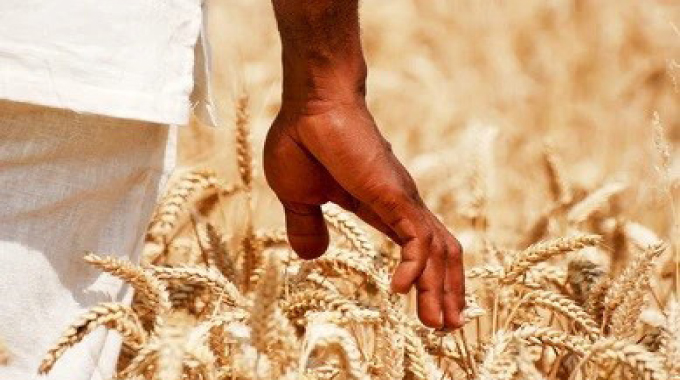COMMENT: With Govt support, wheat farmers should aim to surpass target

We are fast approaching this year’s wheat growing season and farmers have been preparing hard for it.
As it has always done since land reform, the Government is closely involved too, creating an environment for farmers to work the land.
It is supporting growers secure loans from banks and is directly supporting others, including those working at communal irrigation schemes in many parts of the country.
Inputs such as seed, fertiliser, chemicals and tillage services are being provided in the communal sector that has functional irrigation capacity.

Photo Credit: Shutterstock
We expect commercial farmers who have capacity to irrigate to have already secured external financing or used internal sources of funding to get ready.
The planting target for the year is 85 000 hectares. If, as expected farmers realise the national average of five tonnes per hectare, we would reap around 425 000 tonnes this winter.
That harvest would be enough for national consumption for a year. It, too, would be above the 300 000 or so tonnes that the country harvested last winter.
The Zimbabwe National Water Authority reported earlier this month that the national dam level was around 91,9 percent, which boosts water security for this year’s winter growing season.
We are looking ahead with much hope that the improving harvests of the past few seasons will sustain the trend this winter and in the next summer season.
However, for the winter activity to be successful, farmers’ irrigation systems must have sustainable power supply. This has been a challenge before as Zesa struggled to keep the feed on, and the centre pivots at work.
An assurance by Zimbabwe Electricity Transmission and Distribution Company (ZETDC) acting managing director, Engineer Howard Choga on Wednesday was most timely.
He told delegates during a panel discussion at ZITF International Business Conference that the utility has guaranteed 100-megawatts for winter wheat irrigation.
“At Zesa we want to confirm the effectiveness of Government programmes by way of supporting the sectors with electricity.
For the year 2020-2021, the irrigated hectarage increased by 53 percent, which meant that we had to support that growth through power supply,” said Eng Choga..
He added, ZETDC, a Zesa subsidiary, has made a commitment to avail 100 megawatts this year for winter wheat. “This speaks to the way we see growth in the agriculture sector,” said Eng Choga.
He said Zesa, a member of Southern African Power Pool under Sadc, was positioned to import power as and when needed.
“We are in the region looking for power and we are getting priority. We have secured 100 megawatts from Zambia and South Africa and 200 megawatts from Mozambique,” he said.
“We are getting the power ahead of our competitors in the region, which basically speaks to the friendliness that is there between Zimbabwe and neighbouring countries.” Energy and Power Development Minister, Zhemu Soda had the same message recently.
Zesa has commendably moved at the right time to not only secure adequate energy for wheat production but also calming farmers’ nerves for possible power shortage.
With all inputs available, farmers will work with a singleness of the mind. Seed, fertiliser, chemicals, and tillage services are there; irrigation systems are there and electricity to power them has been guaranteed.
The Government has set pre-planting wheat floor producer prices of $175 741,86 per tonne for ordinary grade while the premium grade will fetch $193 316 per tonne.

Minister Soda Zhemu
That is about US$1 105 per tonne for ordinary grade wheat and US$1 215 per tonne for top grade wheat. This is huge and must encourage farmers to produce.
With all these variables in place, nothing will stop the country from achieving its planting target of 85 000ha to reap the 400 000 tonnes the country needs for a year’s consumption.
That would be commendable indeed. However, and this is very important, for us to be happy to harvest enough for national consumption for a year is no different from being happy to live a day at a time.
What we want is for our farmers to harvest enough wheat for national consumption two or more years at a time as maize farmers do in good seasons.
This means that the Government, financial institutions, research institutions and farmers themselves have to seriously interrogate the wheat growing model in the country for us grow the size of land under the crop, provide the needed financing, come up with high-performing varieties and to boost the harvest per unit area above the national average of five tonnes per hectare.










Comments